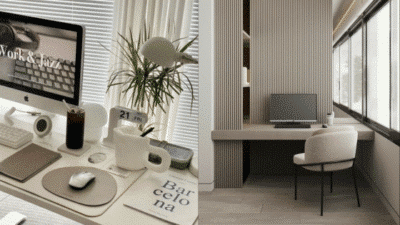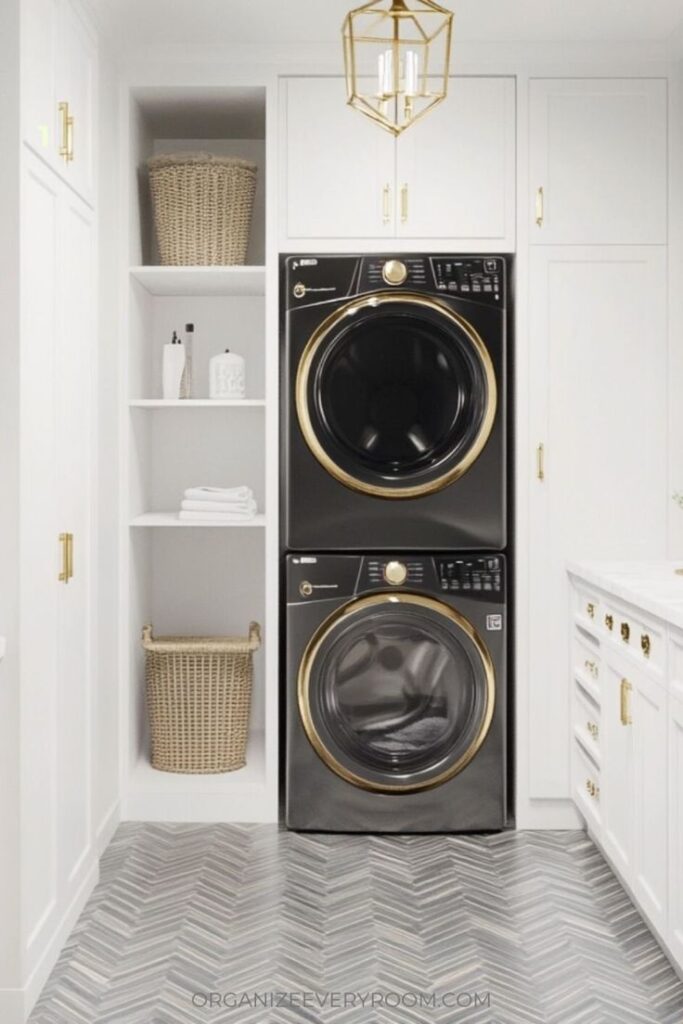
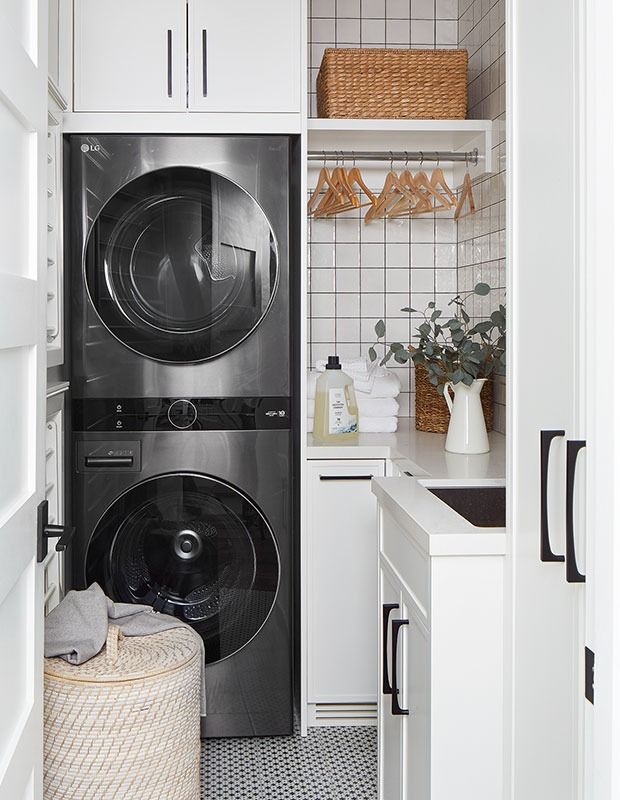
A small laundry room doesn’t have to feel cramped or cluttered. With smart planning, it can become a functional and attractive space that makes laundry tasks easier and more enjoyable. Maximizing every inch through clever design can create a big impact even in the smallest laundry areas.
Using compact storage solutions and thoughtful layouts helps fit everything needed without crowding the room. Adding features that serve more than one purpose can also save space and boost efficiency. Style doesn’t need to be sacrificed in a small laundry space; even simple touches can improve the look.
Key Takeaways
- Efficient layouts make small laundry rooms practical and usable.
- Smart storage keeps the space organized and clutter-free.
- Design choices can combine function with style in tight spaces.
Maximizing Small Laundry Room Layouts
Creating a functional laundry room in a small space takes planning. It requires smart use of available area, careful appliance choices, and using every inch for storage. These details help make chores easier and keep the space organized.
Efficient Floor Plans
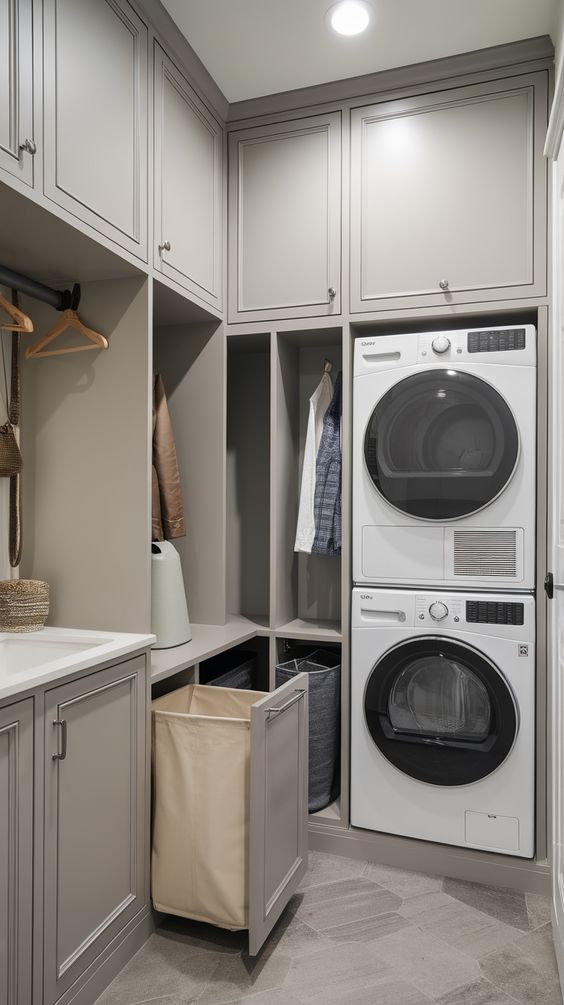
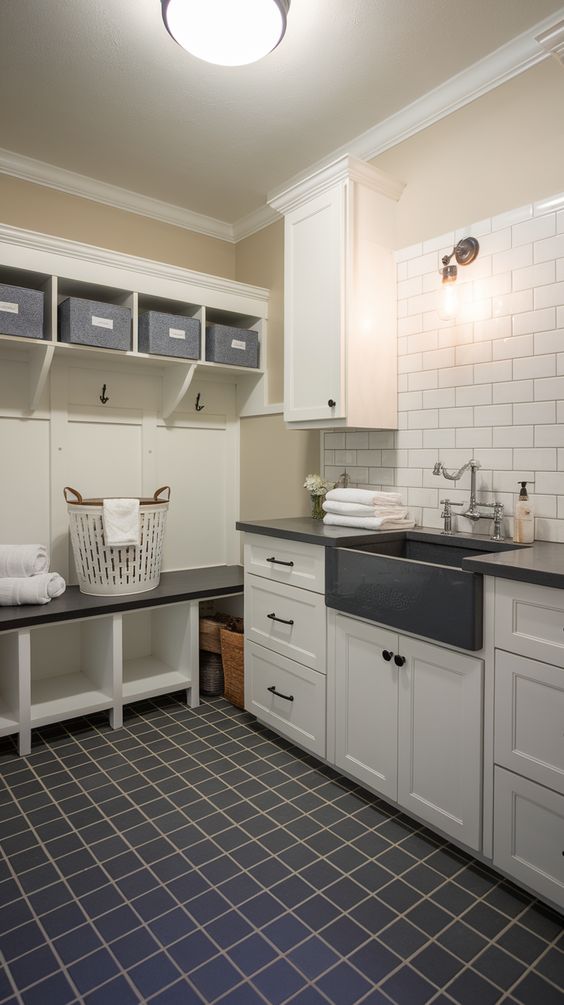
An efficient layout keeps everything within easy reach. Placing the washer and dryer side by side lets users stack laundry or fold clothes on a countertop above them. If space is tight, stacking appliances vertically saves floor room.
Leaving a clear path to open doors fully is important. Keep at least 24 inches of clearance around appliances. Narrow rooms benefit from a single long countertop on one wall instead of islands.
Using corners with specialized cabinets or shelves can add storage without clutter. Folding doors or sliding doors for laundry access save room compared to traditional swinging doors.
Vertical Space Solutions
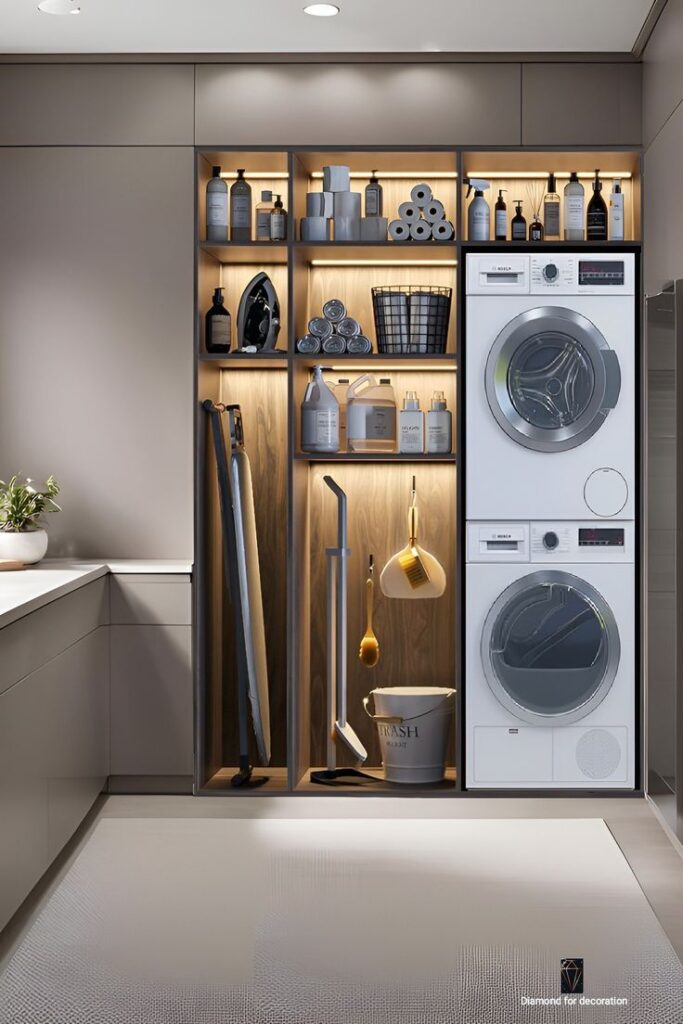
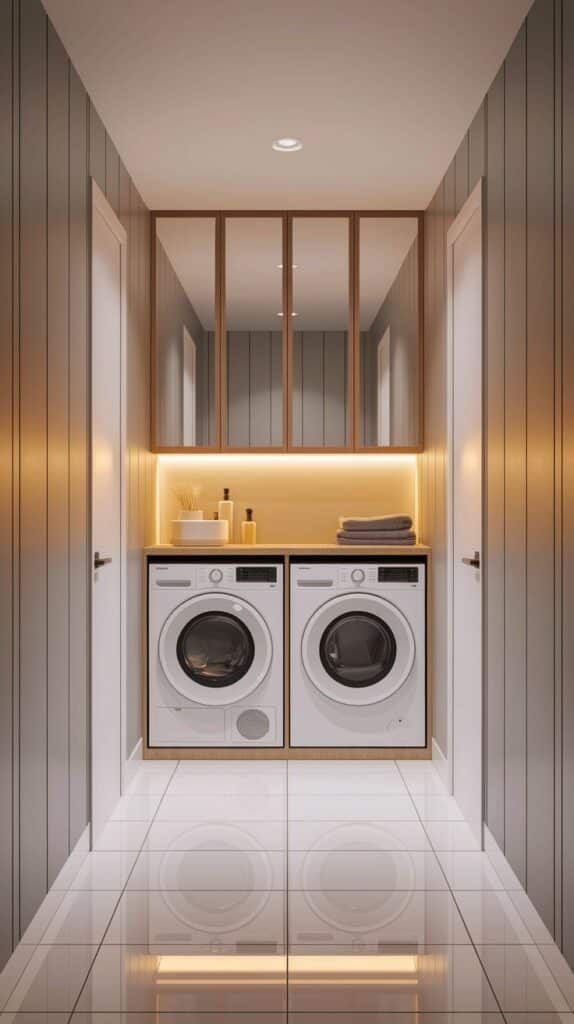
Walls offer valuable space for storage and organization. Installing shelves or cabinets above the washer and dryer can hold detergent, cleaning supplies, and baskets. Open shelves keep items visible and easy to grab.
Hooks and pegboards on the walls help hang brushes, bags, or drying racks. A tension rod between cabinets or walls is perfect for hanging clothes to air dry.
Using tall cabinets that reach the ceiling maximizes storage. A rolling ladder or step stool can help access high shelves safely. Vertical baskets or bins keep small items tidy and off counters.
Choosing the Right Appliances
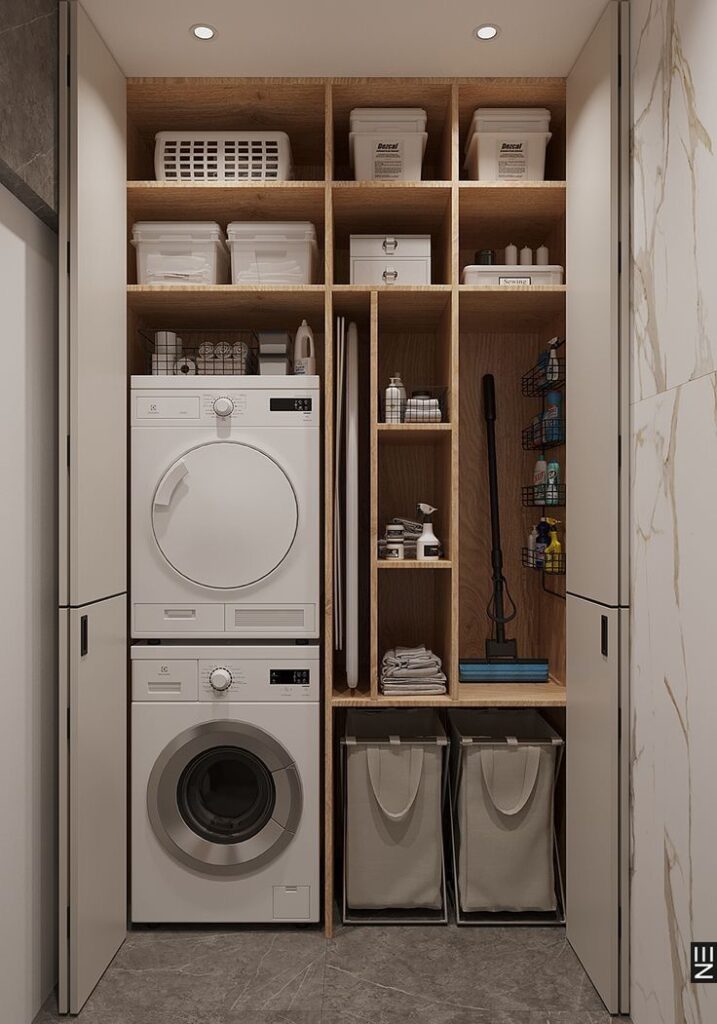
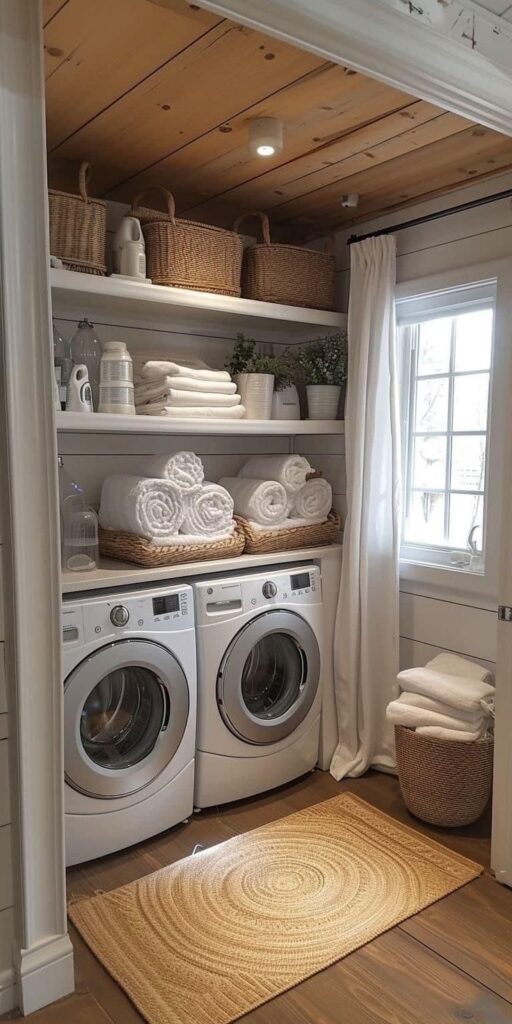
Small laundry rooms benefit from compact, efficient machines. Front-loading washers and dryers can be stacked, saving floor space. Look for models labeled “compact” or “slim” which fit into narrow or shallow areas.
Energy-efficient appliances lower utility bills and reduce heat build-up in small rooms. Some models include smart features like delay start or app control for convenience.
Combo washer-dryers are an option where space is very limited. They wash and dry in one unit but usually have lower capacity and slower cycles. Choosing appliances with quiet operation improves comfort in small, shared homes.
Smart Storage Strategies
Effective storage in a small laundry room uses vertical space, hidden compartments, and clever hooks. These methods help keep items organized while saving floor space. Choosing the right storage options can make the room feel larger and easier to use.
Cabinet and Shelf Options
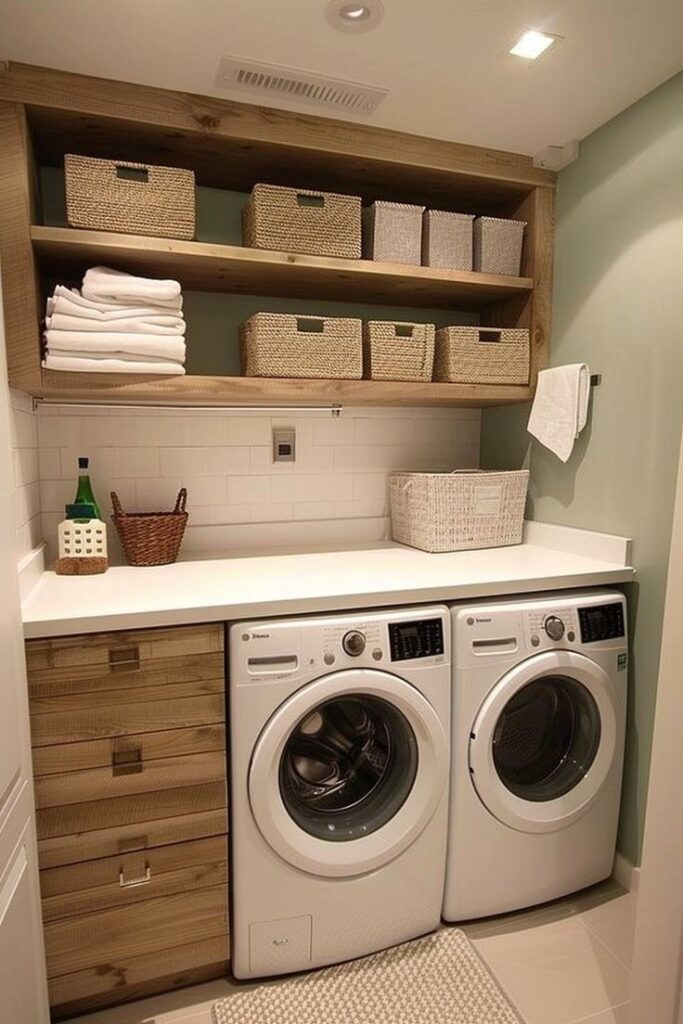
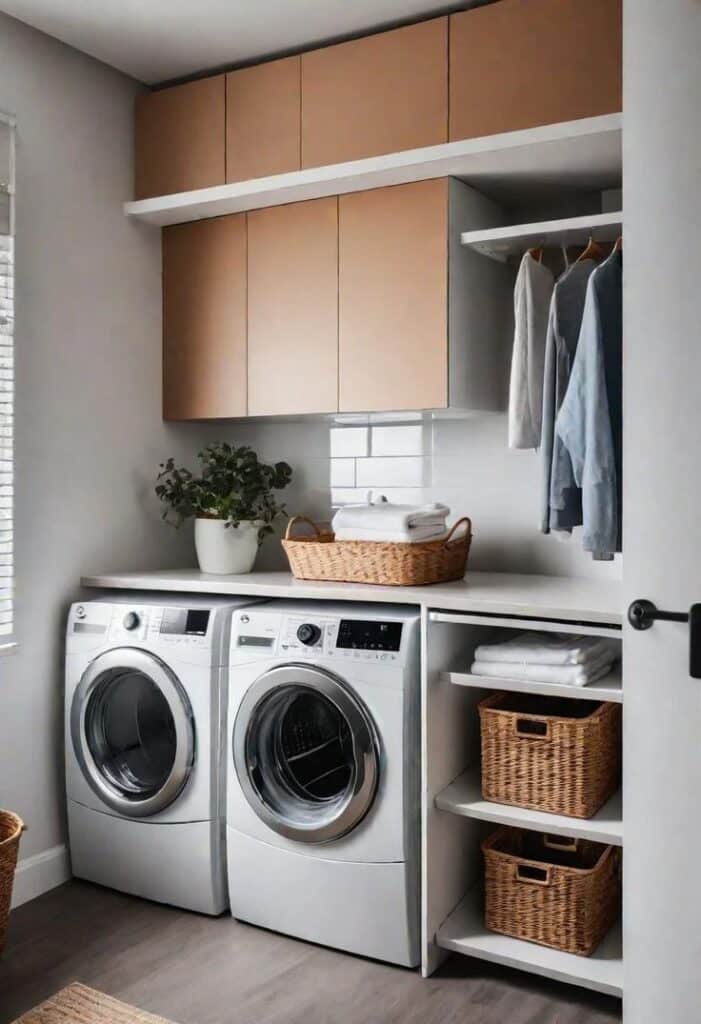
Cabinets with adjustable shelves allow flexible storage for detergents, cleaning tools, and supplies. Wall-mounted cabinets keep things off the floor and create more open space below for hampers or laundry baskets. Open shelves are also useful for frequently used items and can make the room feel less cramped.
Using clear, labeled containers on shelves helps quickly identify supplies. Tall cabinets can store bulky items like ironing boards or large detergent bottles. Combining closed cabinets and open shelves provides both a clean look and quick access to essentials.
Creative Use of Hooks and Racks
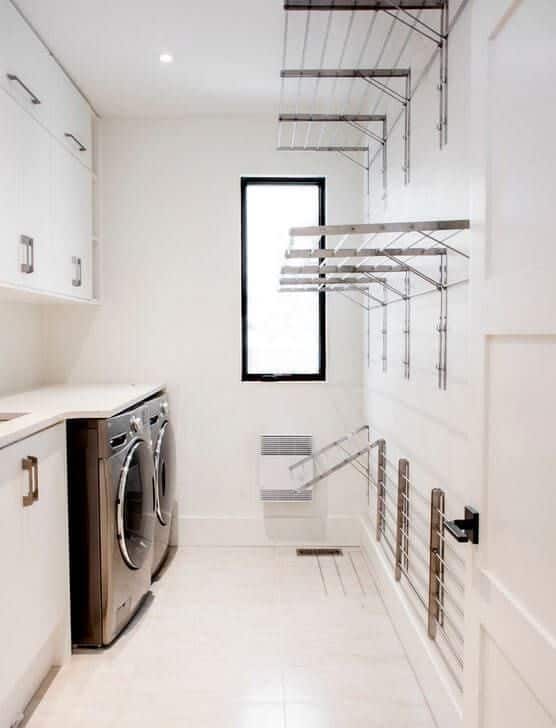
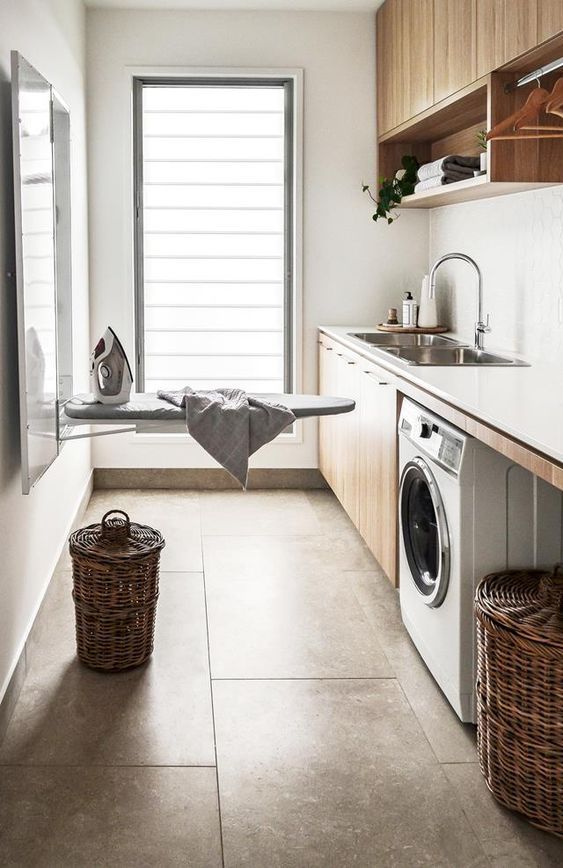
Hooks and racks can hold smaller laundry tools such as brushes, drying racks, and spray bottles. Installing a row of hooks on an empty wall or door can keep these items neatly organized and easy to reach.
Over-the-door racks or fold-down drying racks save space when not in use. Magnetic strips or pegboards offer flexible options to rearrange tools as needed. Hooks near the washer and dryer allow for hanging laundry bags or clothes hangers to air dry.
Hidden Storage Ideas
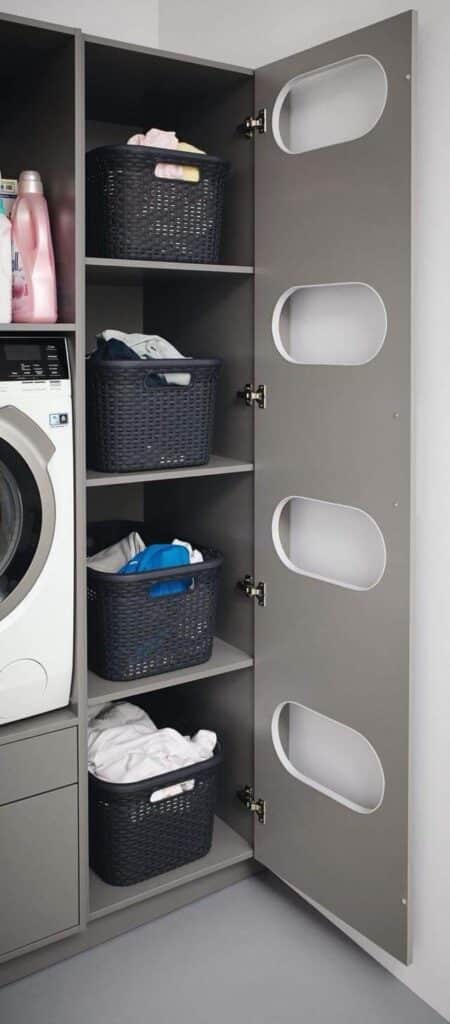
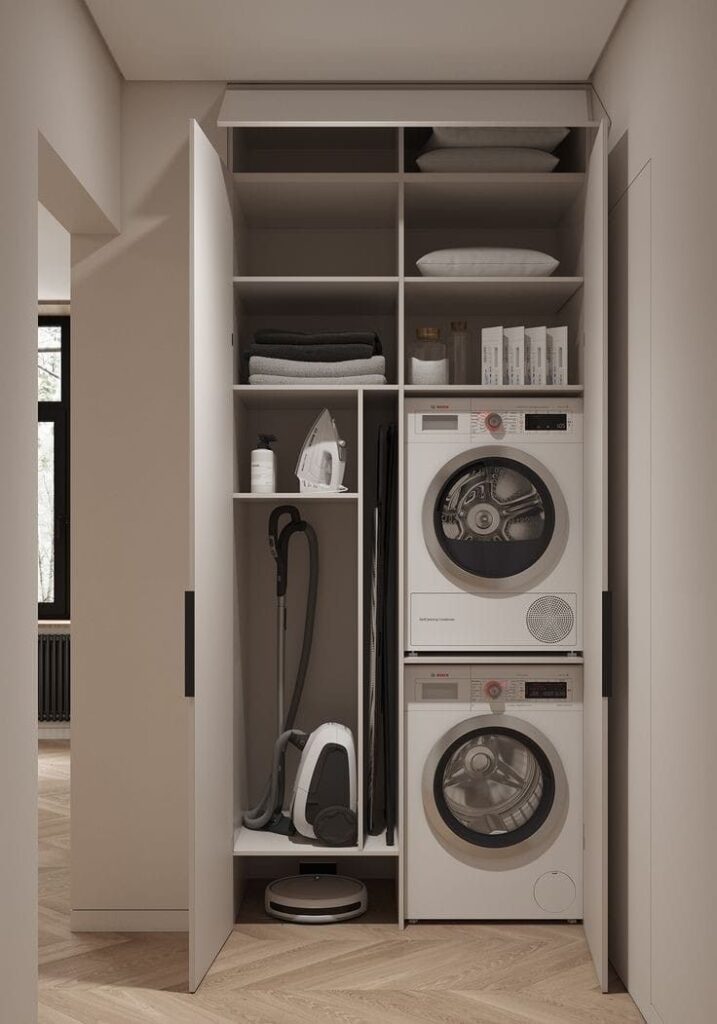
Hidden storage keeps the laundry room tidy by concealing clutter. Pull-out drawers or baskets inside cabinets hide cleaning supplies and prevent spills. A fold-down ironing board built into a cabinet door frees up space and stays out of sight when not used.
Using the space above or behind appliances for hidden shelves or cabinets maximizes room utility. Under-sink storage with sliding organizers provides easy access to bottles or cloths while keeping them out of view. These hidden options help maintain a clean, functional laundry area.
Functional Workspaces
A good laundry room must include useful areas to make tasks easier. It needs space for folding clothes and spots for ironing without taking up too much room. These features help keep the workflow smooth and efficient.
Folding Areas for Small Spaces
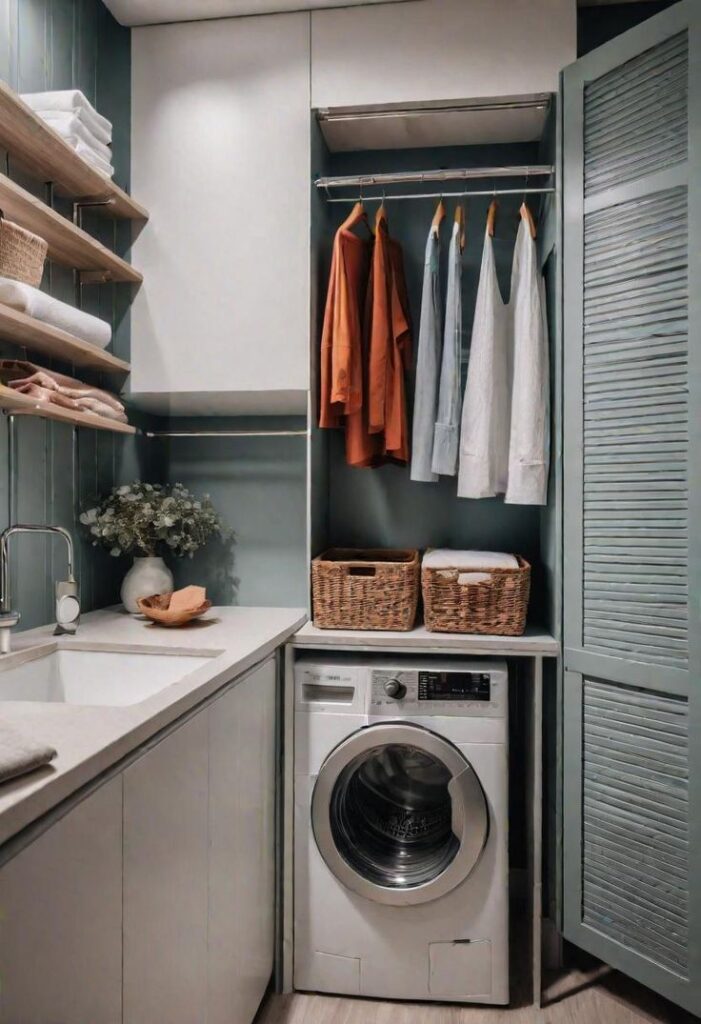
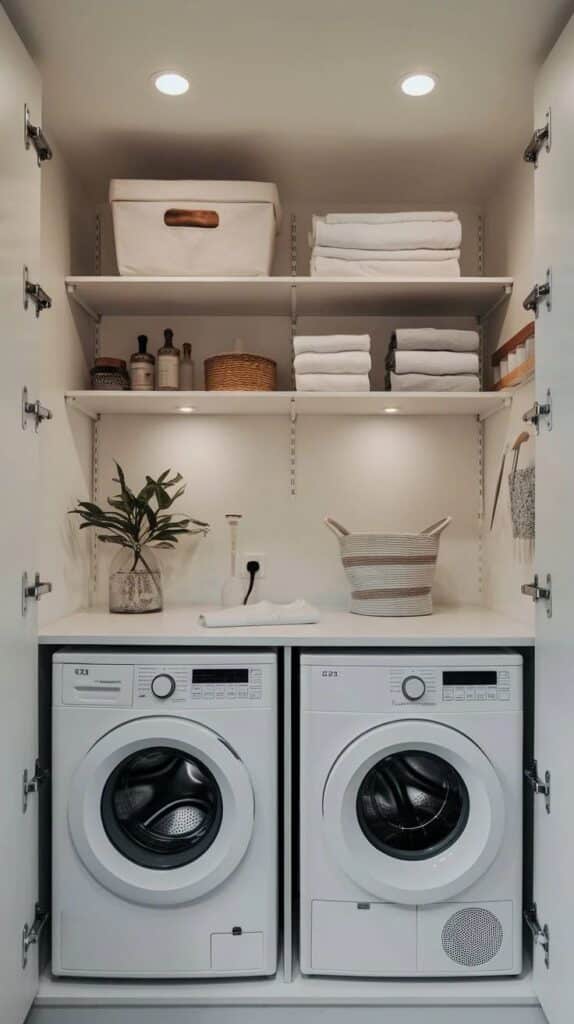
In small laundry rooms, folding areas should be compact but practical. A fold-down table on the wall saves space and can be raised only when needed.
Another option is to use the top of the washer and dryer as a folding surface. Adding a non-slip mat helps keep clothes in place.
Storage nearby is important. A small shelf or basket can hold folded clothes or supplies. This keeps the area neat and ready for the next load.
Ironing Board Integration
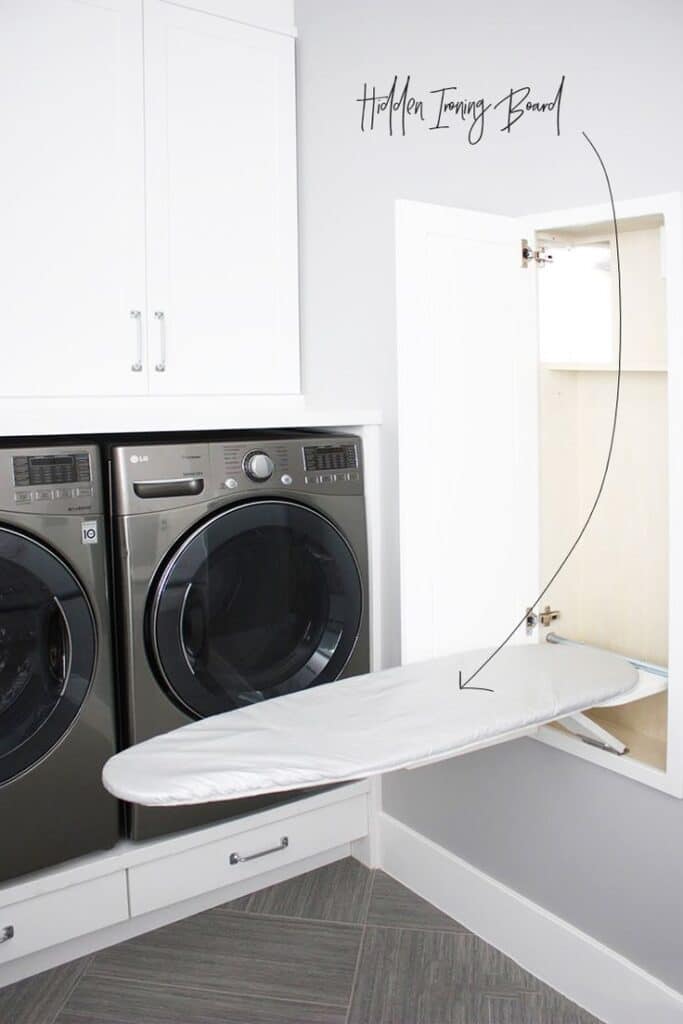
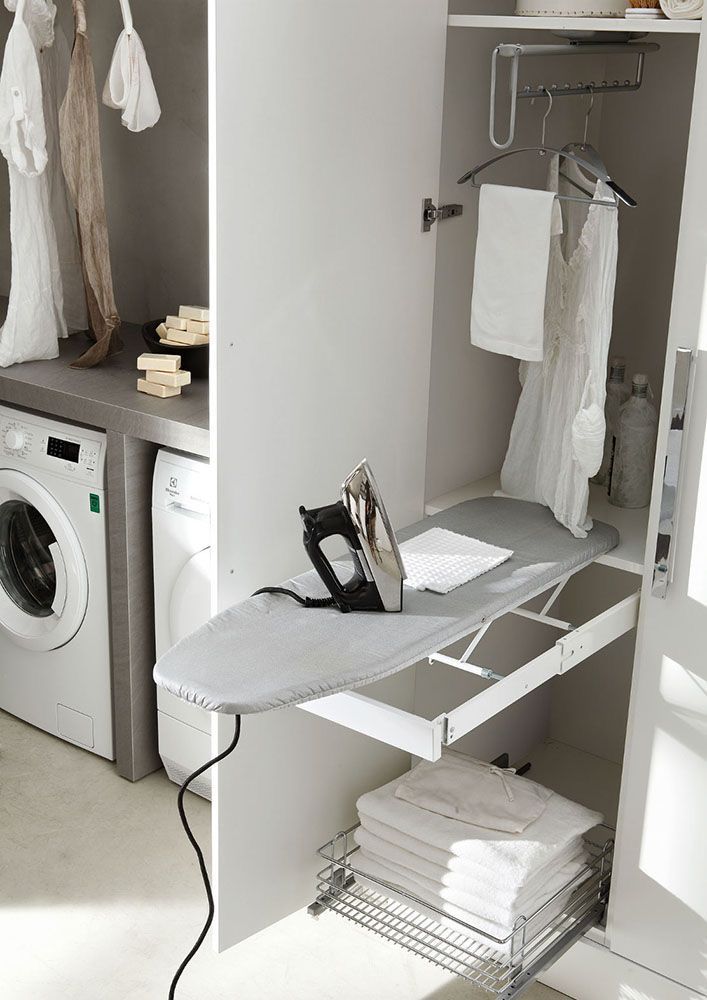
Built-in or fold-away ironing boards work best in tight laundry rooms. They can be hidden inside cabinets or mounted on walls to free floor space.
A pull-out ironing board saves room and can be tucked away after use. It should be easy to reach and sturdy enough for quick ironing tasks.
Including a small storage spot for the iron and spray bottle near the board keeps everything organized. This setup reduces clutter and keeps all tools within arm’s reach.
Enhancing Style in Compact Laundry Rooms
Small laundry rooms can look stylish without feeling crowded. Using the right colors, wall finishes, and lighting can make these spaces feel larger and more inviting. Each detail helps balance function with a fresh design.
Color Schemes to Open Up Space
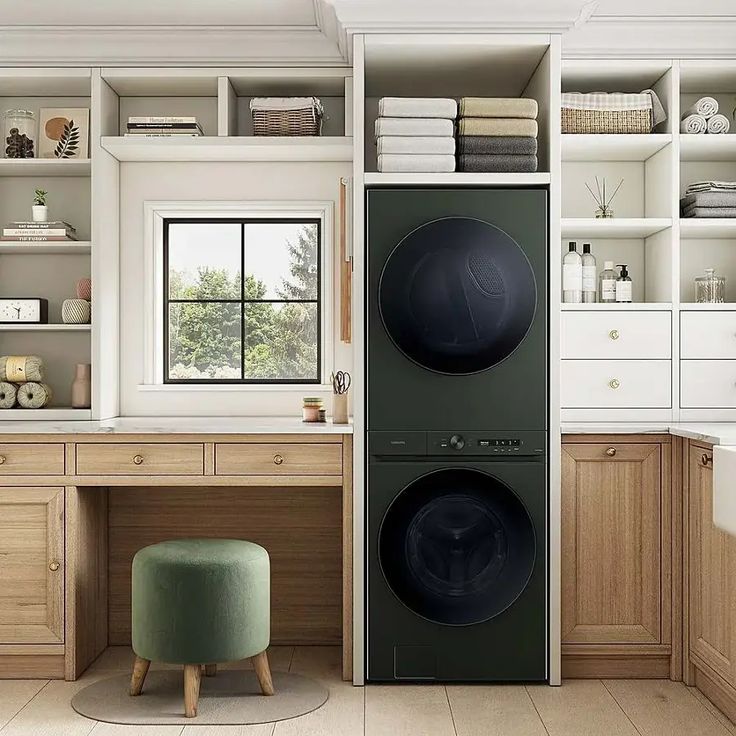
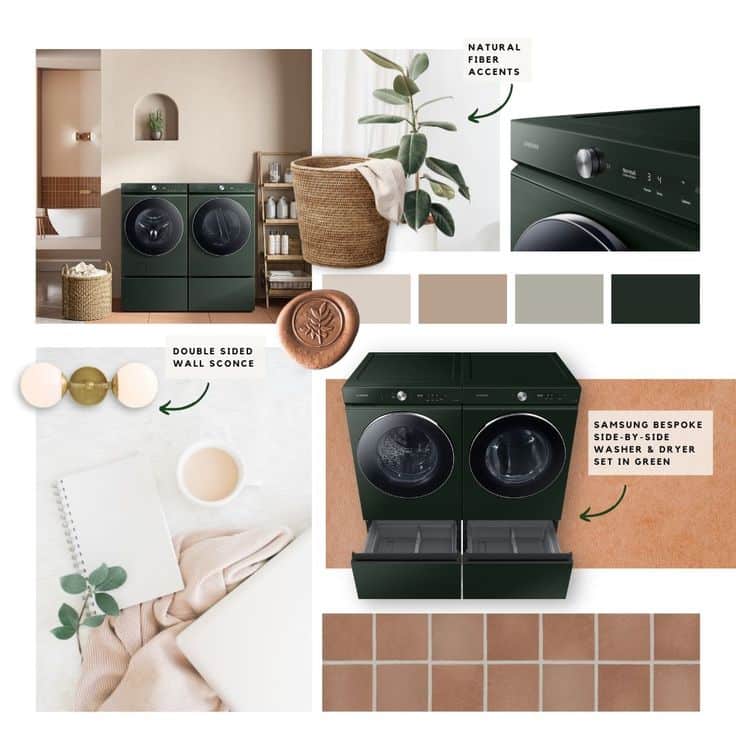
Light colors work best in small laundry rooms. White, soft gray, or pale blue reflect light and create an airy feel. Dark colors can make the room feel smaller, so they are not recommended for walls or cabinets.
Using contrasting trim in white or off-white adds visual depth without overwhelming the room. For accents, pops of color in baskets or wall art can bring interest without cluttering the space.
Matte finishes help hide smudges and keep walls looking clean. Glossy surfaces reflect more light but show fingerprints more easily, so they should be used carefully.
Decorative Backsplashes
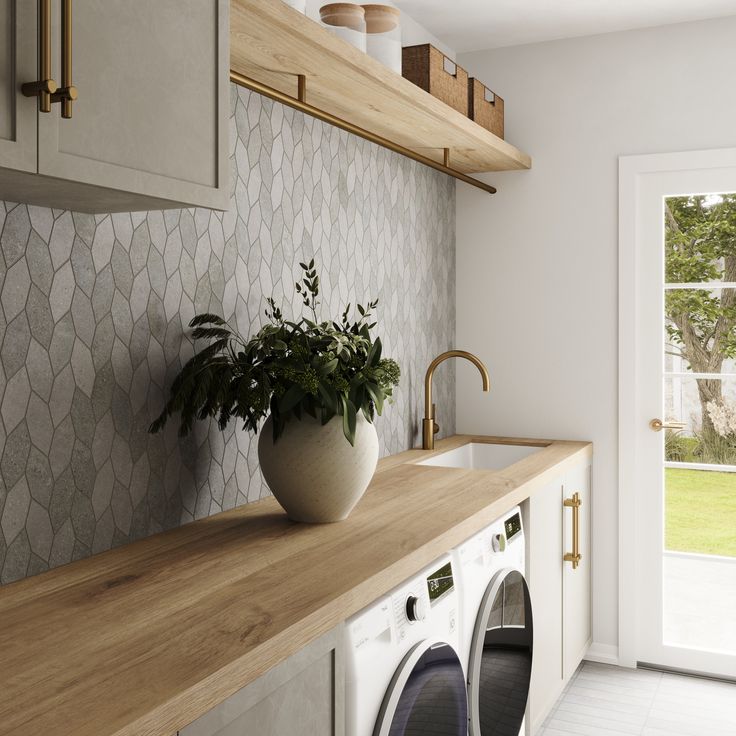
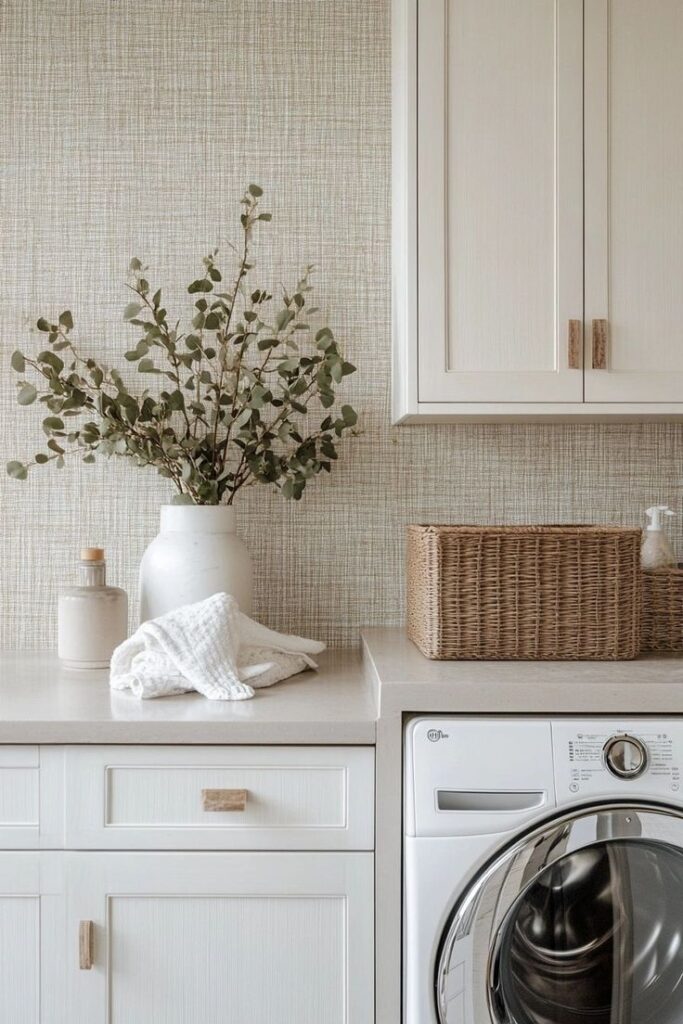
Backsplashes protect walls and add style. In small laundry rooms, tile backsplashes work well because they are easy to clean. Subway tiles in white or pastel shades brighten the room and add texture without being busy.
Patterned tiles can create a focal point. Small geometric patterns or simple mosaics add interest without overpowering the space. Avoid very large or dark tiles, as these can make the area feel cramped.
Installing a backsplash behind the sink and washer area stops water damage and makes cleaning easier. It also allows for a splash of color or design that lifts the overall look.
Lighting Tips for a Bright Atmosphere
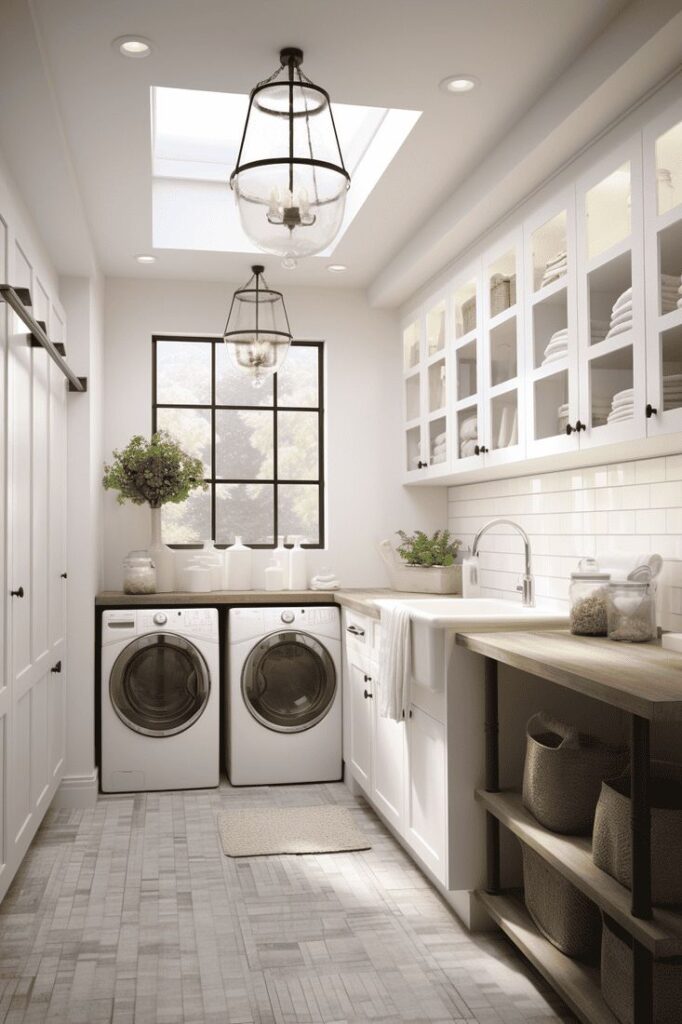
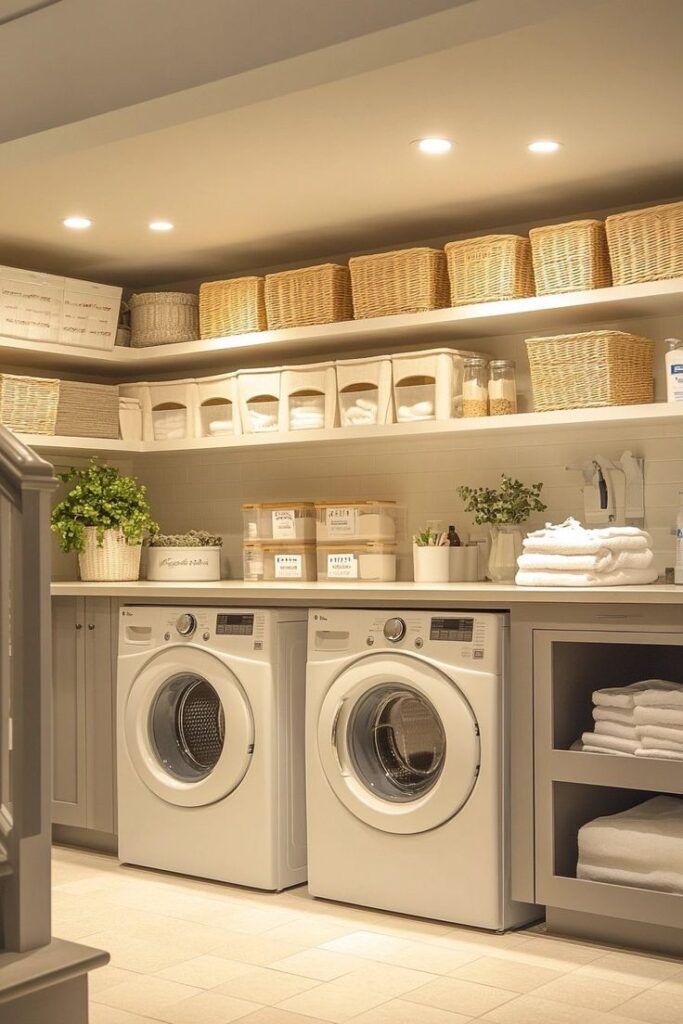
Good lighting is key in compact laundry rooms. Natural light is best, but if that’s limited, bright, cool white LED lights help mimic daylight.
Overhead lights should be bright and even. Adding task lighting under cabinets or over the sink improves visibility for details like stain treatment or sorting clothes.
Avoid harsh shadows by placing lights in multiple spots. Using dimmable fixtures lets users adjust brightness based on the time of day or task.
Using warm lighting in small accents keeps the space from feeling too cold or clinical.
Incorporating Multi-Use Features
Making the most of a small laundry room means adding features that serve more than one purpose. Smart use of space can help with organization and reduce clutter while providing extra functionality.
Laundry-Mudroom Combos
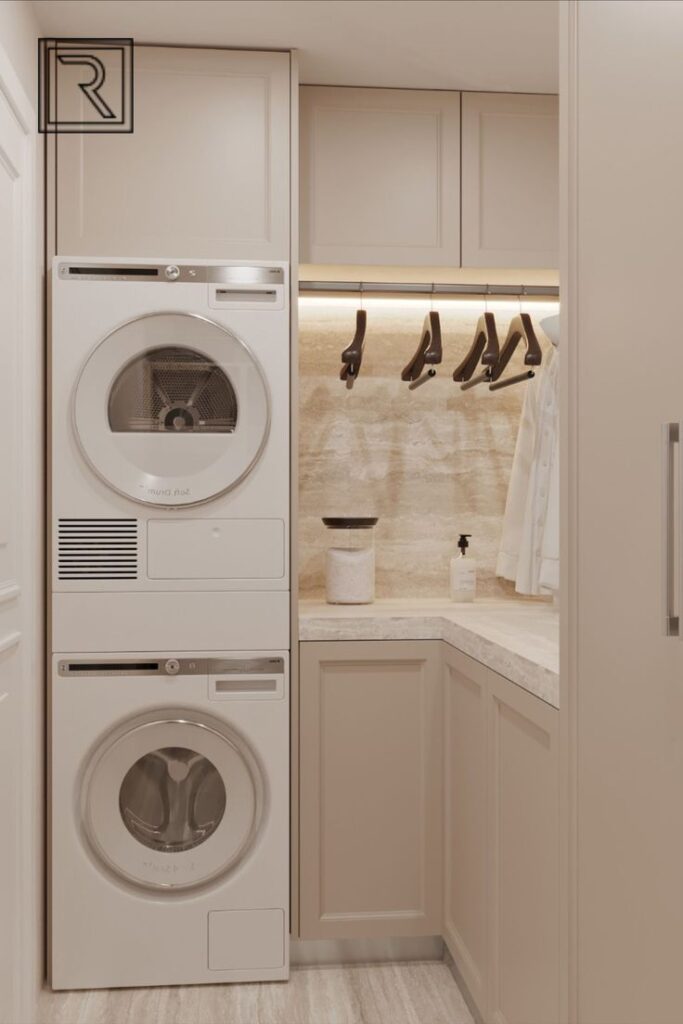
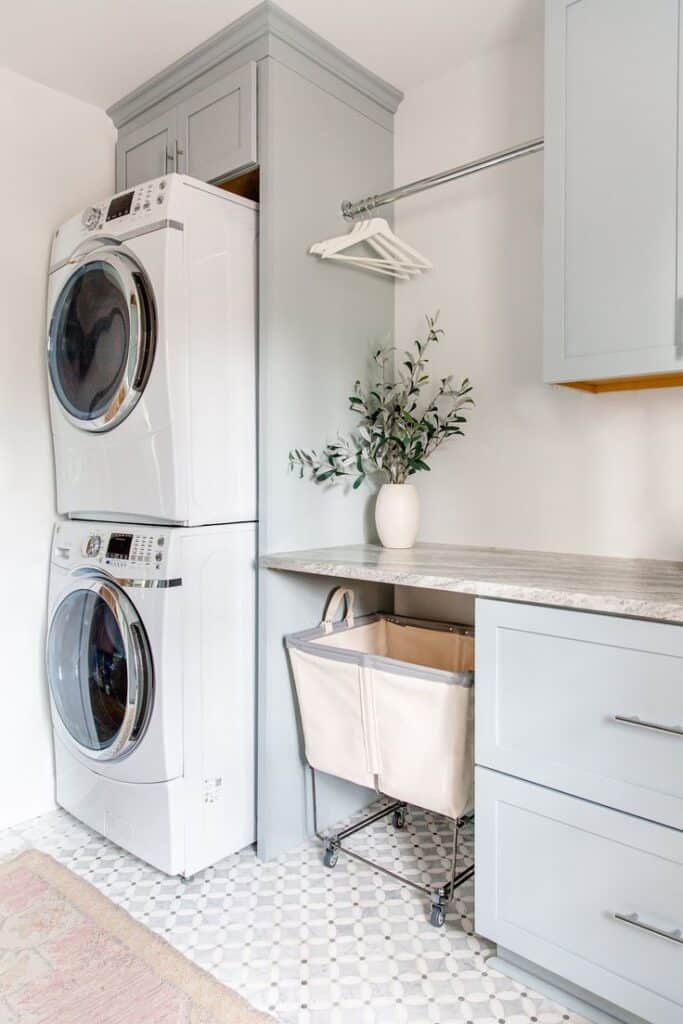
Combining a laundry room with a mudroom helps keep dirt and mess contained. Installing built-in cubbies or lockers lets the family store shoes, coats, and bags in one place. A bench with storage underneath provides seating for changing shoes and holds laundry baskets.
Hooks on walls or doors keep frequently used items accessible. Waterproof and easy-to-clean floor materials are important because muddy shoes or wet clothes end up here. Adding a hanging rod near the washer gives a spot for air-drying clothes. This design saves space while keeping the entry clean and the laundry workflow smooth.
Pet Washing Stations

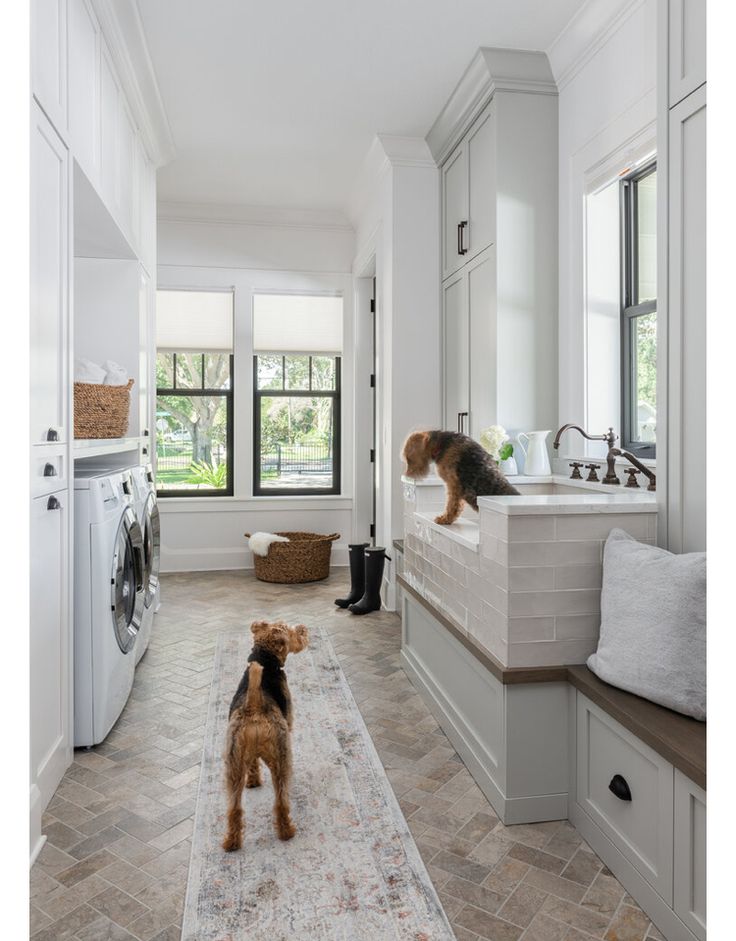
A pet washing station in the laundry room is a smart way to clean pets without making a mess elsewhere. A small, raised tub or sink keeps pets contained during baths. Non-slip surfaces and handheld spray hoses make washing easier and safer.
Storage nearby for towels, pet shampoo, and brushes keeps everything handy. A drain at floor level allows for quick cleanup. This setup avoids muddy footprints around the house and uses laundry room plumbing efficiently. It is especially useful for families with dogs or cats that need regular cleaning.
Space-Saving Laundry Accessories
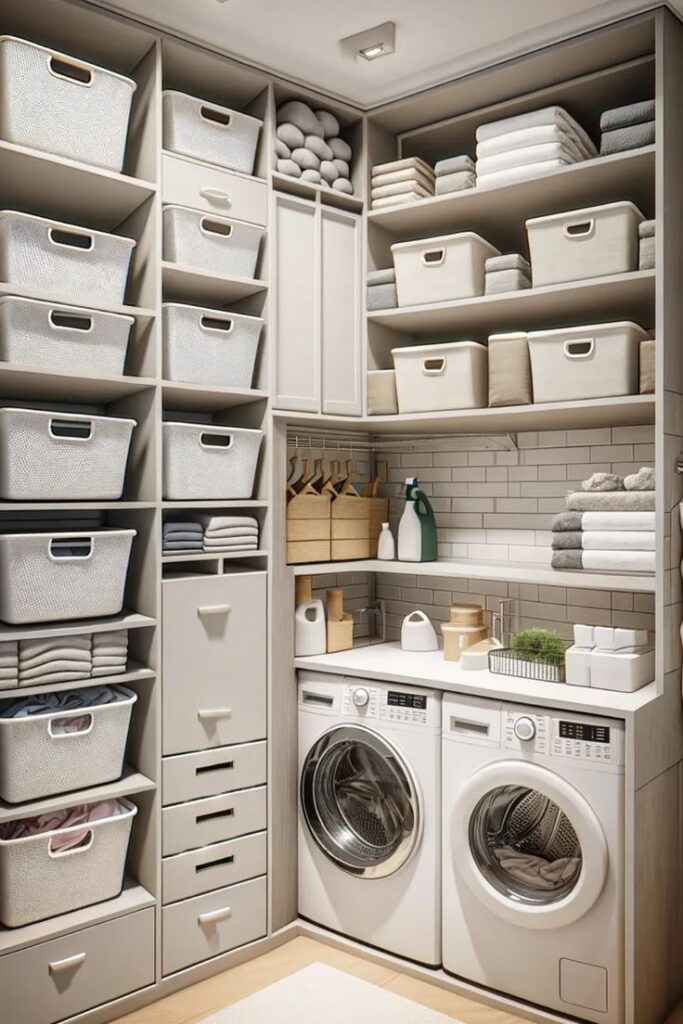
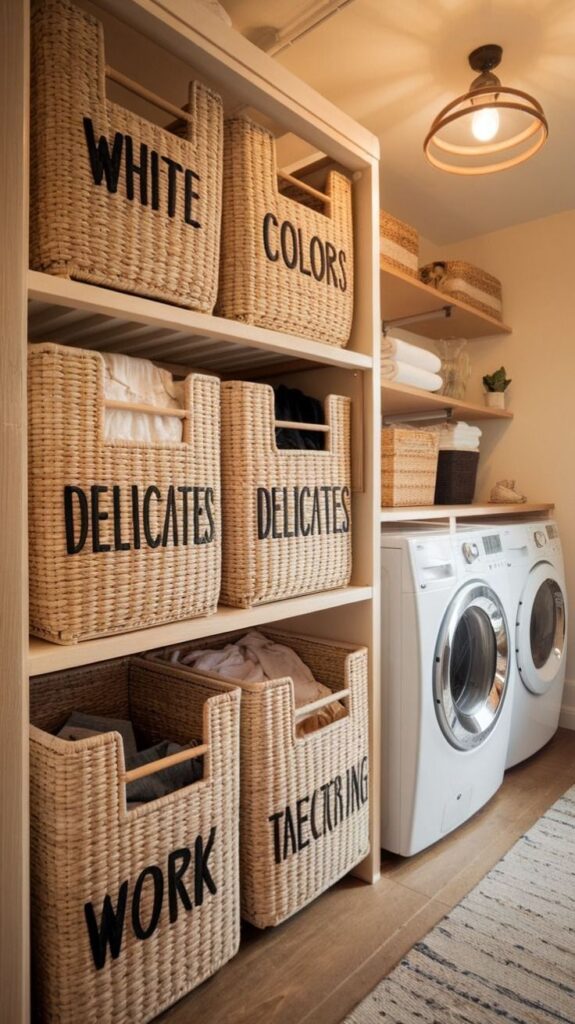
Small laundry rooms need smart accessories to save space and stay organized. Wall-mounted drying racks are effective. They fold flat when not in use, freeing up floor space.
Stackable washer and dryer pedestals lift machines off the floor. This adds storage underneath and reduces bending. A fold-down ironing board is another good idea. It can be tucked away when not needed.
Using slim, rolling laundry carts helps keep detergents and supplies nearby. They easily slide between machines or into a closet. Hooks and magnetic strips on walls store items like lint rollers and clothespins.
A hanging garment rack fits over doors or windows. It holds clothes to dry or air out without taking floor space.
| Accessory | Benefit | Space Saved |
|---|---|---|
| Wall-mounted drying rack | Dries clothes, folds flat | Floor space |
| Stackable pedestals | Raises machines, adds storage | Under-machine space |
| Fold-down ironing board | Saves space when stored | Wall and floor |
| Slim rolling laundry cart | Moves easily, stores supplies | Between machines |
| Hooks and magnetic strips | Holds small items neatly | Wall space |
These accessories help make small laundry rooms more efficient. They keep essentials organized and make the room feel less cluttered.
Maintaining Organization in Small Laundry Areas
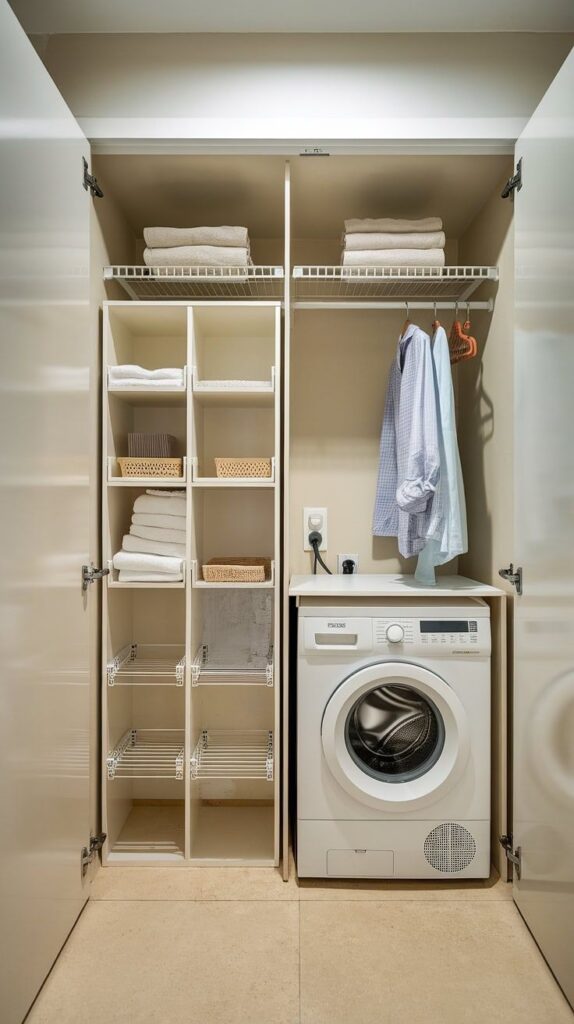
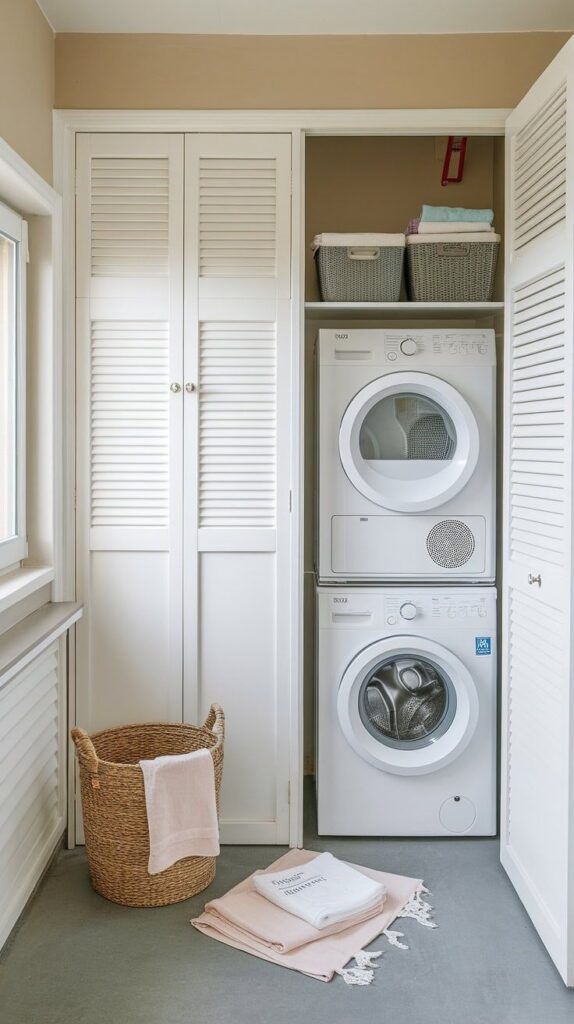
Keeping a small laundry space tidy is key to making it work well. He or she should start by decluttering regularly. Only essential items belong in the laundry room.
Using storage solutions like shelves, bins, and hooks saves space. Baskets or clear containers can keep detergents and supplies neat and easy to find.
A good tip is to label containers. This helps everyone in the household quickly spot what they need. Labels can be simple and printed or written.
Vertical space is valuable. Installing wall-mounted racks or slim cabinets makes use of unused areas without crowding the floor.
Keeping cleaning tools in one place is helpful. A hanging organizer or a tall, thin cabinet can store brooms, mops, and brushes neatly.
Here is a simple checklist for maintaining organization:
| Task | Action | Frequency |
|---|---|---|
| Declutter | Remove non-essential items | Monthly |
| Restock supplies | Check detergent levels | Weekly |
| Clean surfaces | Wipe shelves, counters | Weekly |
| Organize tools | Store and hang neatly | As needed |
Consistency in these habits helps maintain a floor and shelf space that feels open and usable. Organization makes laundry less stressful and more efficient.
- 73shares
- Facebook0
- Pinterest73
- Twitter0

